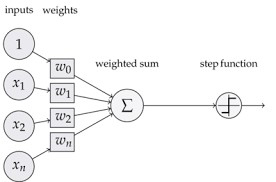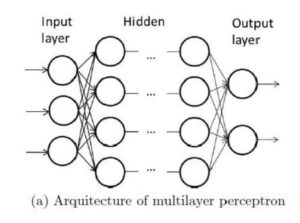
One of the perceived benefits of the LLC form is the flexibility that exist with respect to inter se management structure. Although many statutes provide skeletal defaults for when the LLC elects to be either “member-managed” or “manager-managed,” these are only default rules that may, in any particular LLC, be modified in the manner the participants desire. One not uncommon modification is structuring an LLC that is managed by a “board.” Given that the structures are, with the exception of LLCs organizing in the three states discussed below, free-form, the clarity or ambiguity of the structure is dependent upon the precision of the drafting employed in the operative agreement. We have found that there often is a great deal of ambiguity in these provisions. In addition, a number of decisions, Obeid v. Hogan and Richardson v. Kellar the most prominent, counsel caution against using a board because doing so may unintentionally incorporate (pun intended) additional law.
The (Perceived) Benefits of a “Board” Management Structure
The perceived benefit of organizing an LLC with a “board” management structure is, in our assessment, based upon the familiarity with that format as utilized traditionally in the corporation. For example, when three independent venturers come together to organize a joint project, by utilizing a board to which each of the members may appoint one or more participants, each is assured that its viewpoint will be presented and considered. For example, particularized drafting of quorum provisions requiring at least one representative of each of the participants can further enhance those perceived protections.
This is not to say, however, that the “board” appointed with respect to an LLC is equivalent to the board of directors of a corporation. Initially, the board of directors of a corporation is sui generis; it is created by statute and exists independently of the shareholders. A corporation typically will have directors before it even has shareholders (see, e.g., MBCA §§ 2.6.21, 8.01). The faculty of the board to manage the affairs of the corporation is likewise dictated by statute (see MBCA §§ 8.01, 8.31) and, absent narrow circumstances, courts have rejected efforts to restrict or even eliminate the authority of the board of directors (see, e.g., CA, Inc. v. AFSCME Employee Pension Plan, 953 A.2d 227 (Del. 2008)).
In contrast, the “board” of an LLC is a creature of contract. Being foreign to the LLC acts of almost every state, the board will have such structure, authority, and limitations as are defined in the relevant operating agreement. This paradigm raises a variety of interesting issues. For example, corporate law does not conceptualize the board of directors as an agent of or otherwise representing the shareholders. Conversely, if the members of an LLC create a board and delegate to it particular authority, at least on an inter se basis, the board is exercising authority collectively delegated by the members and may be viewed, collectively, as their agent. The question raised is whether the board is then acting as an agent of the members collectively, or whether the board is the controller of the LLC that acts as to third parties as the principal. The implications of this shift in paradigm must be considered in the drafting of any operating agreement utilizing a board structure.
There are as well a significant number of implicit and explicit consequences of electing that an LLC will be “manager-managed” and then utilizing a “board.” For example, where an LLC has multiple managers, most statutes provide that each manager, acting individually, is an agent on behalf of the LLC and can bind it to transactions in the ordinary course (see, e.g., KRS § 275.135(2)(b)). If there is an organized board, is it intended that it be a collegial body, none of whose constituents have, by virtue of that office, agency authority on behalf of the venture (that being the corporate rule), or is there a collegial body for making decisions, but each constituent thereof is still a “manager” with agency authority on behalf of the LLC? In a corporation, the rule is already fixed, but in an LLC one option or the other must be selected in order to avoid a patent ambiguity in the agreement.
Another open question is the ability of a member of a board to vote by proxy. Many operating agreements give members and managers the express authority to vote by proxy, and certain LLC acts provide a default rule allowing proxy voting (see, e.g. Del. Code Ann. tit. 6, § 407). Conversely, except in Louisiana, directors may not vote by proxy (see, e.g., ABA Corporate Director’s Guidebook 8 (2011); MBCA § 8.20, comment). Are the members of the “board” of a particular LLC allowed to vote by proxy? A well-crafted operating agreement must address that question. In the absence of doing so, there will be ambiguity as the available analogies provide conflicting, indeed entirely opposing, answers.
Statutory Board Structures
As noted above, the “board-managed” LLC is foreign to almost every LLC act; however, there are three exceptions. The LLC acts of Minnesota, North Dakota, and Tennessee each provide for a statutory board-managed structure that may be elected (see Minn. Stat. § 322C.0407(4) (2016); N.D. Cent. Code § 10-32.1-39(4) (2016); Tenn. Code Ann. § 48-249-401(c) (2015)). If a particular venture desires to have a board-managed structure, organizing under one of these acts may be an effective means of achieving that outcome. Subject to modification in a particular operating agreement, the statutory rules with respect to the board-managed structure should reduce a transaction cost incurred in drafting an operating agreement for a board-managed LLC formed in another state.
The Problem of “Corporification”
“Corporification” is the term, possibly invented by Steve Frost, to describe the incorporation (pun intended) into LLCs of concepts and principles that have arisen in the context of corporations. See Steven G. Frost, Things You Thought You Knew About Delaware Law, But Maybe Don’t … Recent Delaware Partnership and LLC Case Law, J. Passthrough Entities, May-June 2013 at 25. Oftentimes the utilization of concepts developed initially in corporate law into an LLC leads to either confusing or unintended consequences because there exists ambiguity as to the degree to which corporate law is intended to be incorporated. A pair of recent cases provide clear illustration of these problems: Obeid v. Hogan, No. 11900-V CL, 2016 BL 185285 (Del. Ch. June 10, 2016) and Richardson v. Kellar, 2016 NCBC 60, 2016 WL 4165887 (Sup. Ct. N.C. Aug. 2, 2016).
The Obeid v. Hogan dispute arose out of a pair of LLCs: Gemini Equity Partners, LLC and Gemini Real Estate Advisors, LLC. Each of these LLCs was owned one-third by Plaintiff William T. Obeid, one-third by Christopher S. La Mack, and one-third by Dante Massaro. Between the two LLCs, they held in excess of $1 billion in real estate assets, including 11 hotels and 22 commercial properties. Prior to the disputes addressed in the litigation, Obeid managed the hotel properties while La Mack and Massaro managed the commercial properties. Defendant Hogan is a retired federal judge who was retained to serve as the special litigation committee on behalf of both the LLCs. Throughout the litigation, the court referred to Gemini Equity Partners, LLC as the Corporate LLC and to Gemini Real Estate Advisors, LLC as the Manager-Managed LLC.
The Corporate LLC, organized in Delaware, utilized a board of directors comprised of Obeid, La Mack, and Massaro through July, 2014, at which time La Mack and Massaro removed Obeid. With respect to the Manager-Managed LLC, Obeid, La Mack, and Massaro each served as a manager.
On July 1, 2014, La Mack and Massaro voted to remove Obeid as the president of the Manager-Managed LLC, installing Massaro in his place. Although Obeid remained a manager, Massaro took on day-to-day control of the Manager-Managed LLC. After a flurry of litigation ranging from North Carolina to federal and state courts in New York, the Corporate LLC and the Manager-Managed LLC, under the control of La Mack and Massaro, hired the Brewer firm to serve as outside counsel. One of its recommendations was that a retired federal judge be hired to serve as a special litigation committee to respond to a derivative action filed in New York with respect to both the LLCs. After a meeting at which no formal resolutions were adopted, the Brewer firm circulated the names of two retired federal judges it had identified as appropriate to serve as the special litigation committee. Hogan ultimately was retained to serve in that role pursuant to an engagement letter signed by La Mack and Massaro. Crucially for the outcome of this decision, Hogan was not appointed a director of the Corporate LLC nor a manager of the Manager-Managed LLC. Upon learning that Hogan had been so retained, Obeid filed this action in Delaware seeking a determination that Hogan could not act as special litigation committee on behalf of either LLC or otherwise take any action with respect to the derivative suit. In addition, Obeid sought a declaratory judgment that his removal as a director of the Corporate LLC was invalid.
With respect to Hogan’s service as the special litigation committee for the Corporate LLC, after setting forth its ultimate conclusion that he could not do so, the court began its analysis with a telling section heading: “The Implications of Mimicking a Corporation’s Governance Structure.” From there the court observed that LLCs may design their inter se management structure as they see fit, citing Robert L. Symonds, Jr. & Matthew J. O’Toole, Delaware Limited Liability Companies § 9.01[B] at 9-9 (2015) for the principle that “[v]irtually any management structure may be implemented through the company’s governing instrument.” The court wrote:
Using the contractual freedom that the LLC Act bestows, the drafters of an LLC agreement can create an LLC with bespoke governance features or design an LLC that mimics the governance features of another familiar type of entity. The choices that the drafters make have consequences. If the drafters have embraced the statutory default rule of a member-managed governance arrangement, which has strong functional and historical ties to the general partnership (albeit with limited liability for the members), the parties should expect the court to draw analogies to partnership law. If the drafters have opted for a single managing member with other generally passive, nonmanaging members, a structure closely resembling and often used as an alternative to a limited partnership, then the parties should expect a court to draw analogies to limited partnership law. If the drafters have opted for a manager-managed entity, created a board of directors, and adopted other corporate features, then the parties to the agreement should expect a court to draw on analogies to corporate law. Depending on the terms of the agreement, analogies to other legal relationships may also be informative. (citation and footnotes omitted).
Although going on to recognize that there are limitations in drawing analogies among LLCs and other organizational forms, the court, citing Elf Autochem N. Am., Inc. v. Jaffari, 727 A.2d 286, 293 (Del. 1998), observed that, “the derivative suit is a corporate concept grafted onto the LLC form” and concluded that, “absent other convincing considerations, case law governing corporate derivative suits is generally applicable to suits on behalf of an LLC.”
Having determined that the corporate law governing special litigation committees in derivative actions would be applicable to the corporate LLC, the court turned its attention to the decision in Zapata Corp. v. Maldonado, 43 A.2d 779 (Del. 1981). After an extensive review of that decision and the role of the special litigation committee, the court noted an absence of situations in which the special litigation committee was comprised of nondirectors and observed that, because derivative litigation does not fall into the ordinary course, these matters must, in the corporate context, be resolved by the board. The court observed that, “A board may not make a similarly complete delegation to an officer or a non-director. Doing so would risk an improper abdication of authority. Hence the requirement exists that a Zapata committee be made up of directors.” From there the court ultimately concluded that, “Judge Hogan is not a director of the Corporate LLC. Consequently, under the Corporate LLC Agreement, he cannot function as a one-man special litigation committee on behalf of the Corporate LLC.”
Turning to the manager-managed LLC, even as the court acknowledged it was not utilizing a board of director management model, it concluded that the manager-managed system employed was sufficiently analogous to a board structure to justify the application of Zapata and the ultimate determination that Hogan could not, with respect to that LLC, serve as a special litigation committee. “In my view, the resulting structure is sufficient to cause the reasoning that governed the Corporate LLC to apply equally to the Manager-Managed LLC.”
This brings us back to corporification. The drafter of the LLC agreement for the Corporate LLC wrote into the document significant aspects of the laws of corporate derivative actions. From that utilization, the court assumed that the entire body of law governing derivative actions, including the law developed exclusively through court decisions, was intended to be applied in the context of this LLC. In effect, the court read into the express terms of the LLC agreement the common-law penumbra of derivative actions. Whether that is what was actually intended by the drafter is unknown. Did the drafter intend that the common law of derivative actions be incorporated by a deemed incorporation by reference, or did the drafter intend that only so much of that law as was set forth in the agreement would apply? Curiously, the court did not reference the terms of the merger clause of either LLC agreement.
Richardson v. Keller, 2016 NCBC 60, 2016 WL 4165887 (Sup. Ct. N.C. Aug. 2, 2016), decided by the North Carolina Business Court, involved the interpretation of an operating agreement that incorporated by reference the usual authority of the president of a North Carolina corporation. In the course of its opinion, the court explained that the authority of the president of a corporation is open to interpretation.
This case arose out of an application by Richardson for a preliminary injunction, which relief was ultimately granted. Richardson, through a wholly owned LLC, and Kellar, through another wholly owned LLC, were the two, 50-percent members of a North Carolina LLC named TransWorld Medical Devices, LLC (TW Devices). Richardson and Kellar were the two directors of TW Devices. The organic documents of that company were quite specific in detailing the purpose of the company—namely, the development of a variety of cardiovascular-related medical devices. Ultimately, TW Devices became a shareholder in a subsequently organized corporation, Cleveland Heart, Inc. (CHI), which was also owned in part by the Cleveland Clinic Foundation. Kellar ultimately sought to marginalize Richardson, unilaterally voting the interest of TW Devices in CHI, asserting that he could do so in his alleged capacity as CEO/president of TW Devices.
At this juncture, the question turned ultimately on whether TW Devices was merely a holding company with respect to an interest in CHI, or rather had other business purposes. The court held that TW Devices was not a mere holding company. On that basis, the voting of TW Devices’s interest in CHI was an extraordinary matter that needed to be resolved by the LLC’s two-member board of directors. On the basis that Kellar was, in effect, stripping Richardson of his right to participate in those decisions, the requested temporary injunction was granted.
Back to corporification. Initially, Kellar argued that, because TW Devices should be viewed as a mere holding company, he had the capacity to vote the shares as the president/CEO thereof under the operating agreement. In furtherance thereof, he pointed to section 4.12(a) of the TW Devices operating agreement, which provides:
Any officer . . . shall have only such authority and perform such duties as the Board may, from time to time, expressly delegate to them. . . . [U]nless the Board otherwise determines, if the title assigned to an officer of the Company is one commonly used for officers of the business corporation formed under the North Carolina Business Corporation Act, then the assignment of such title shall constitute the delegation to such officer of the authority and duties that are customarily associated with such office, including the authority and duties that a President may assign to such other officers of the Company under the North Carolina Business Corporation Act.
The only problem was that, even as the operating agreement sought to incorporate the authority of an officer, including the president, those are actually open questions under North Carolina law. Rather:
North Carolina law does not provide definitive guidance regarding the “customary” authority possessed by corporate presidents. The Business Corporation Act does not define the duties or powers possessed by officers. North Carolina’s leading commentator on corporate law has noted that:
The allocation of authority and duties among corporate officers is usually outlined to some extent, either specifically or generally, by the corporate bylaws, and is then further defined in more detail by the directors and by the officers themselves. To the extent that these respective functions of corporate officers and agents are not thus defined by the corporation, they may be defined by the law and custom is developed by normal practices.
Russell M. Robinson, II, Robinson on North Carolina Corporation Law § 16.01 (7th ed. 2015) (footnotes omitted).
Corporification rears its head again; the operating agreement incorporated the unresolved point of a president’s authority even as it made the two members subject to the standards applicable to corporate directors. An LLC with two individual members is not the type of entity that most practitioners would envision adopting a corporate structure governed by corporate law. The dispute suggests that at least one of the parties did not envision the incorporation of corporate law. These cases illustrate that the use of corporate labels and principles may add uncertainty and provide the members of an LLC with a management structure they had not envisioned.














